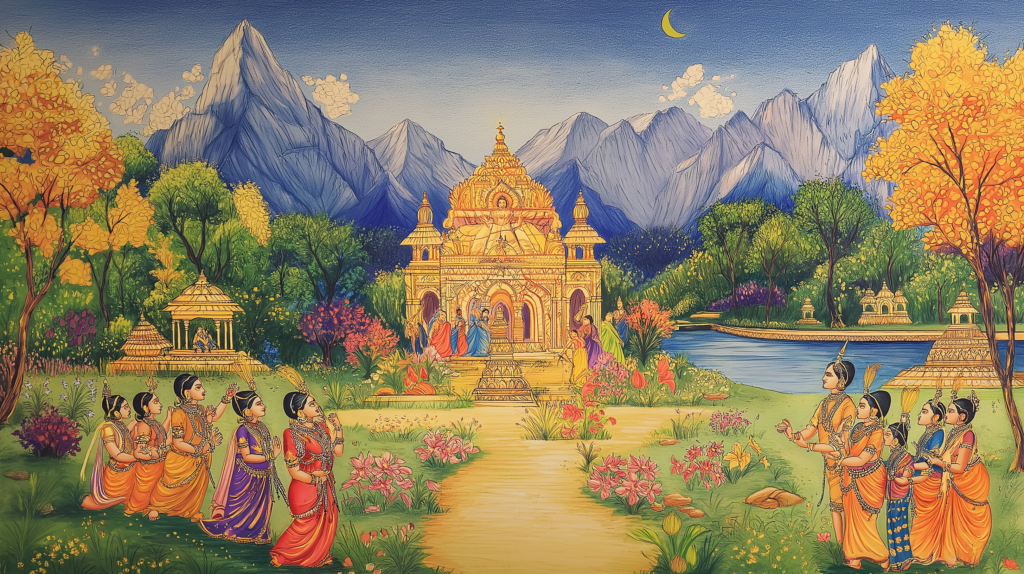Happiness is a slippery little creature, isn’t it? Chase it too hard, and it scurries off into the bushes. Ignore it, and it might curl up in your lap like a contented cat. The Hindu philosophical tradition has spent millennia pondering this riddle, splitting its wisdom into two categories: Śruti (that which is heard, divinely revealed) and Smṛti (that which is remembered, passed down through human tradition).
These two streams of thought approach happiness with distinct but complementary attitudes – one cosmic, the other practical. If we let them, they might just whisper a thing or two about finding that joy in our lives.
Śruti: The Eternal Tune of Happiness
Śruti texts, particularly the Upaniṣads, do not concern themselves with your weekend plans or whether a better job will finally make you happy. Śruti plays the long game. It tells you that true happiness (ānanda) is not something to be found outside but is already woven into the fabric of your being. You, my friend, are already bliss itself – you just don’t remember.
Take the Taittirīya Upaniṣad, which describes a layered self, like a Russian doll of existence. The outermost shell is the body, followed by the mind, then intellect, then pure awareness, and at the very core – ānandamaya, the sheath of bliss. This is not the fleeting happiness of a chocolate cake or a well-timed compliment. This is deep, unwavering joy, the kind that doesn’t fizzle out when your Wi-Fi dies.
Śruti doesn’t care much for the ups and downs of daily life. It insists that happiness is not in possessions, not in achievements, and certainly not in the opinions of strangers on the internet. It is in realizing that you are, at your deepest level, pure bliss. But of course, that’s easier said than done.
Smṛti: A More Practical Approach to Joy
If Śruti is the wise old sage on the mountaintop, Smṛti is the street-smart elder who has seen enough to know what works. Texts like the Bhagavad Gītā, the Manusmṛti, and the Mahābhārata offer guidance for the happiness of humans who still have to deal with grocery lists, deadlines, and family reunions.
The Bhagavad Gītā, for instance, does not demand that you retreat into a cave to find happiness. Instead, it suggests a rather paradoxical solution: work, but don’t cling to the results. Act, but don’t let success or failure shake your inner peace. This idea of karma yoga – action without attachment – turns happiness into a side effect rather than the goal.
Then there’s the Manusmṛti, which, despite its controversial aspects, lays out a clear blueprint for a harmonious society, arguing that happiness comes from dharma – fulfilling one’s duty with integrity. It is the kind of happiness that arises not from indulgence but from alignment with one’s role and responsibilities.
And let’s not forget the Mahābhārata, which presents an utterly realistic, sometimes cynical view of happiness. It recognizes that life is messy, morality is complicated, and even the gods are not immune to suffering. Yet, through the story of Yudhiṣṭhira, we see that contentment is not about avoiding suffering but about maintaining equanimity despite it.
So, Which One is Right?
One tells you to realize bliss and the other tells you to practice it in daily life. The secret may lie in blending the two – seeking an inner peace that is not shaken by external ups and downs, while still living fully in the world.
Maybe happiness is not a puzzle to solve, it is neither a truth to be found nor a task to be completed. Perhaps it is merely the brief flicker of light between two long nights?
Śruti says: “Happiness is already within you. You are ānanda.”
Smṛti tells us: “Happiness comes from acting. Keep moving.”

